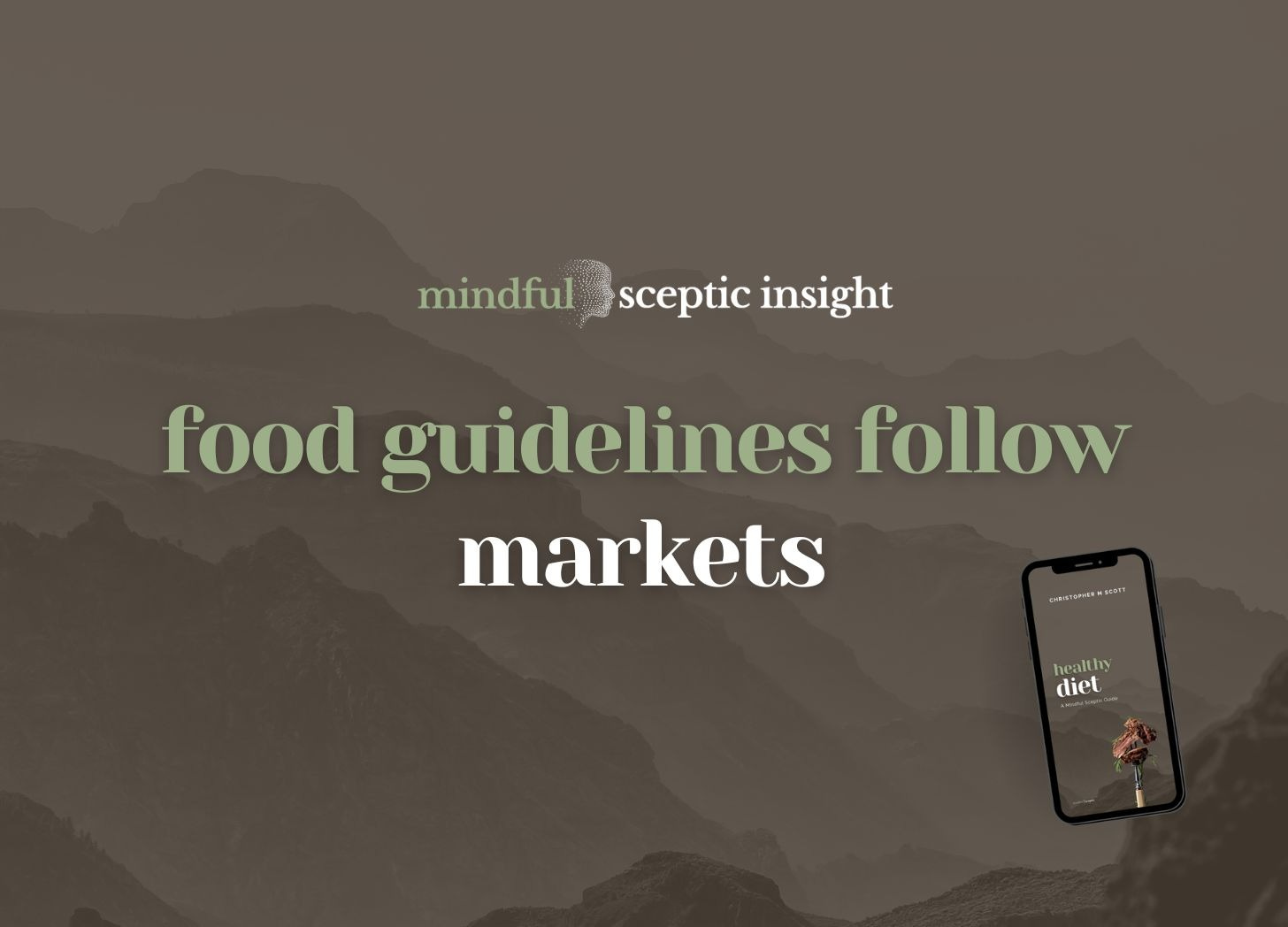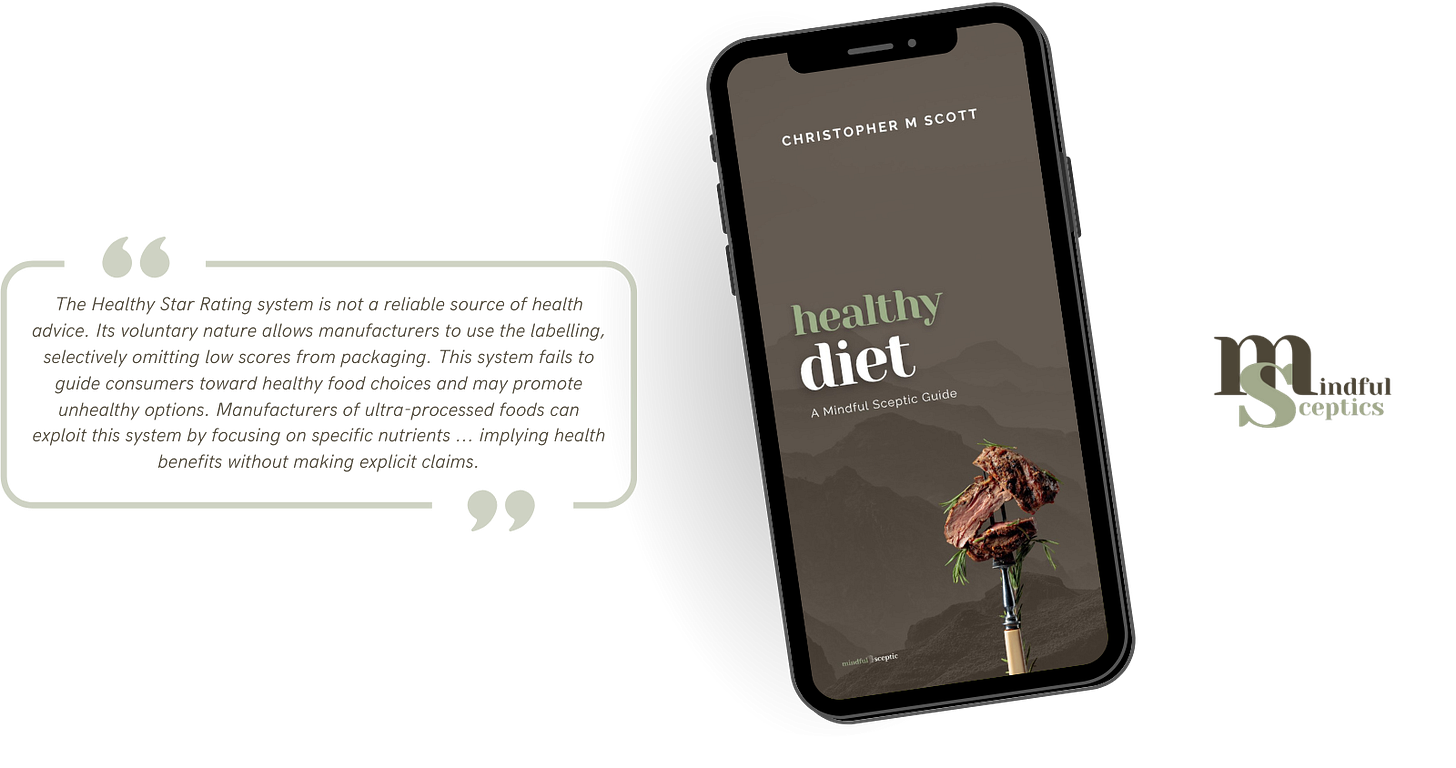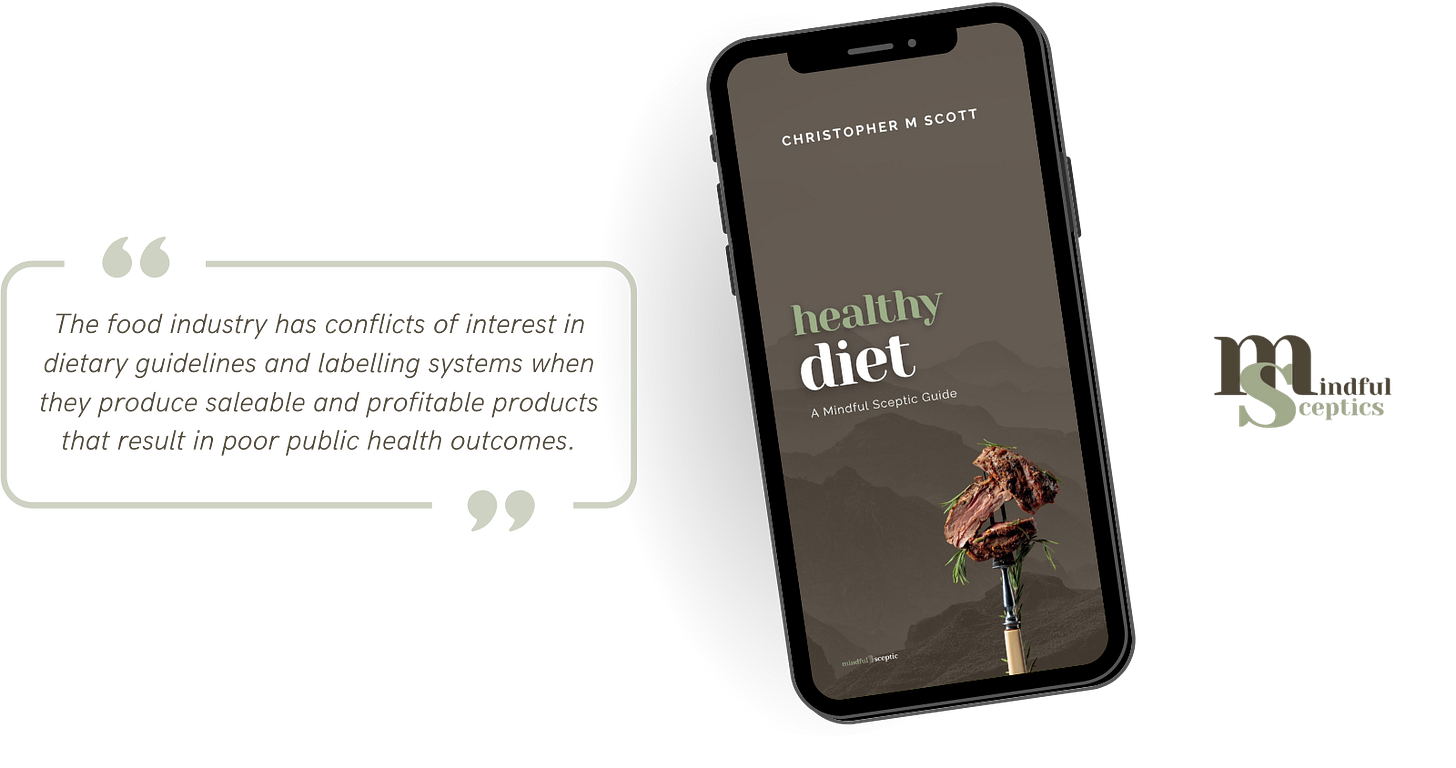Food Guidelines Follow Markets
There are always economic interests behind official diet advice
Core Idea
When the Australian government launches its Healthy Star Rating system, complete with reassuring colours and simple star rankings on food packages, it feels like helpful guidance from people who know better.
After all, they’re doctors and nutritionists, right? They’ve studied the science. They want us to be healthy.
Except here’s the thing.
Walk down any supermarket aisle and you’ll see that half-star butter sitting next to four-star margarine. Real butter, made from cream the way humans have been doing it for thousands of years, gets labelled dangerous. Meanwhile, industrially processed oils extracted from canola seeds using hexane solvents and high heat score nearly perfect.
The system isn’t just wrong—it’s perfectly backwards.
The mindful sceptic lesson is that clever marketing is being conflated with advice for healthy eating. Government dietary guidelines increasingly serve the food industry first, public health second. What appears to be neutral expertise is often captured by the very companies selling us ultra-processed products that didn’t exist when our grandparents were young.
Counterpoint
The conventional story sounds reasonable.
Government dietary guidelines and food labelling systems exist to protect consumers from unscrupulous food companies. They’re based on the best available science, reviewed by independent experts, and designed to help ordinary people navigate a complex food environment. These systems give us objective information to make informed choices about what we eat.
But in practice, the system works backwards.
The Healthy Star Rating is voluntary, meaning manufacturers use it only when it makes their products look good. The guidelines themselves emerge from processes heavily influenced by food industry lobbying. The same companies selling us products with health halos also fund the research that shapes policy recommendations.
Consider the absurdity.
Traditional foods that sustained human health for millennia, like butter, eggs, and meat, now routinely score poorly in these rating systems. Meanwhile, breakfast cereals loaded with sugar earn health claims, and seed oils extracted using industrial solvents get nutritional endorsements.
The butter that your great-grandmother churned is labelled dangerous, but the margarine invented in a laboratory gets government approval.
The deeper problem is a structural one.
When food becomes industrial, it needs marketing to sell products that don’t naturally appeal to human biology. Government guidelines provide that marketing should have scientific legitimacy. They transform corporate messaging into public health policy, complete with official stamps and expert endorsements.
Thought Challenge
Read the fine print next time you shop... Pick three products with health claims or star ratings. Look up who funded the research supporting those claims. What would happen to food company profits if people ate like their great-grandparents did?
Follow the money on one dietary guideline... Choose one official recommendation, like “eat more whole grains” or “limit saturated fat.” Trace which industries benefit from the widespread adoption of this advice. Notice which traditional foods this recommendation displaces.
Both exercises develop your capacity to see through official packaging. Instead of accepting authority at face value, you learn to ask who benefits when I believe this.
Closing Reflection
Being a mindful sceptic about dietary guidelines is about recognising that when billions of dollars are at stake, even well-meaning institutions can be captured by the very interests they claim to regulate.
Your great-grandmother didn’t need a star rating system to know that butter was good food and that something made in a chemical plant probably wasn’t.
That kind of clarity is still available to you if you’re willing to think past the packaging.
Evidence Support
Lauber, K., & Ralston, R. (2021). “Corporate political activity in the context of unhealthy food policy: A case study of WHO–industry interactions.” PLoS Medicine, 18(9), e1003695.
TL;DR… how food and advertising corporations use direct and indirect lobbying, strategic partnerships, and promotional research to shape and delay regulation around unhealthy food. It finds that industry-funded research is more likely to produce favourable outcomes for commercial actors, undermining evidence-based policy.
Relevance to insight… not only the presence but the mechanisms of commercial influence—particularly how corporations manipulate evidence and public processes to align outcomes with their business goals. The findings directly support sceptical inquiries into the legitimacy and public health focus of guideline-making bodies.
Jones, A., Maganja, D., Shahid, M., Neal, B., & Pettigrew, S. (2024). Voluntary versus mandatory food labels, Australia. Bulletin of the World Health Organization, 102(10), 691.
TL;DR… analyses Australia’s Health Star Rating system, finding that most food manufacturers only display health stars voluntarily on higher-scoring (i.e., healthier) products, omitting or withholding them from less healthy products, even after updating packaging for other reasons.
Relevance to insight… how industry actors strategically exploit weaknesses in public health policy for commercial gain, undermining efforts to provide clear nutrition information. It provides specific, empirical support for the argument that “soft” regulatory frameworks are often gamed by corporate interests and fail to consistently promote public health.
Wingrove, K., Lawrence, M., & O’Dea, K. (2021). “Evidence Use in the Development of the Australian Dietary Guidelines: Policy Insights from the ACDG.” Nutrients, 13(11), 3896.
TL;DR… while evidence review is central to Australian Dietary Guideline development, submissions from powerful industry actors with conflicts of interest regularly attempt to influence the content and process. Robust methodology can mitigate, but not eliminate, such influence.
Relevance to insight… ongoing pressures exerted by vested interests during guideline formulation, and the need for careful methodological safeguards to protect public health priorities. It illustrates that even with best-practice review processes, the threat of commercial capture never fully disappears.





